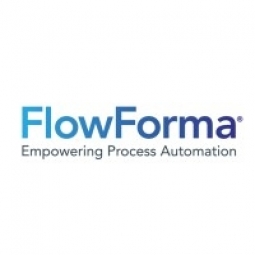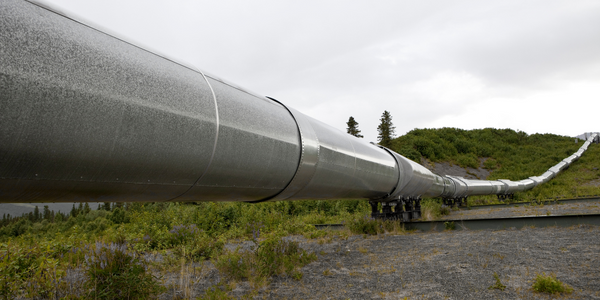Customer Company Size
SME
Region
- Europe
Country
- United Kingdom
Product
- FlowForma Process Automation
Tech Stack
- Microsoft 365
- SharePoint
Implementation Scale
- Enterprise-wide Deployment
Impact Metrics
- Productivity Improvements
- Cost Savings
- Customer Satisfaction
Technology Category
- Platform as a Service (PaaS) - Application Development Platforms
Applicable Industries
- Oil & Gas
- Healthcare & Hospitals
Applicable Functions
- Business Operation
- Quality Assurance
Use Cases
- Process Control & Optimization
- Predictive Maintenance
- Inventory Management
Services
- Cloud Planning, Design & Implementation Services
- System Integration
About The Customer
Based in Scotland, Aberdeen Radiation Protection Services (ARPS) is a business that has benefited from the North Sea oil and gas industry. The company provides radiation protection services including contamination meters and leak test equipment to measure radioactive by-products on rigs. Other customers include waste management and healthcare sectors, but the company has gone global through its work with energy companies as far afield as the Middle East and West Africa. Fast-growth encouraged ARPS to revisit existing processes and look for greater efficiencies. Crucially, the company’s 70 meters have to be recalibrated annually by a third-party to make sure they are compliant and fit for purpose.
The Challenge
Aberdeen Radiation Protection Services (ARPS) was facing challenges with its paper-based processes that were error-prone and inefficient. The company's 70 meters had to be recalibrated annually by a third-party to ensure they were compliant and fit for purpose. The process of tracking and bringing devices in for their yearly test was largely paper-based with a ring binder used for detailing what meter was on which rig. Scribbled notes were often added if a project was extended and it was easy to make mistakes. Worse still, meters that cost between £2,000 to £5,000 occasionally got lost. Excel® spreadsheets were shared by email with clients, but there was no central repository so up-to-date information was hard to find and access. This was becoming an issue and impacting on revenue. ARPS knew it needed to improve its processes and initially went looking for a document management system.
The Solution
ARPS selected Microsoft 365 and SharePoint, realizing that cloud-based software was a perfect fit for globetrotting employees that needed access to documents from anywhere. FlowForma came into the frame when Appetite for Business, FlowForma’s Scottish Specialist Partner recommended deploying FlowForma® Process Automation to sit on top of SharePoint, to turn inefficient paper trails into seamless workflow. Within a year FlowForma Process Automation would become a core application for the business. Every part of the re-calibration process was set up within FlowForma Process Automation, enabling the business to have complete visibility of each meter’s lifecycle through a single window. Transport documentation with the right customs codes for shipping offshore is generated in the process, along with the printed labels for dispatching units to the rig or re-calibration company. The company also conducts wipe tests for clients, where special wipes are brought back from sites around the world and analyzed for radioactivity. If they’re clean the site is passed and issued with a certificate. Heavily dependent on Microsoft Word documents and Excel spreadsheets, it’s another process that was migrated. A signed PDF certificate is emailed straight back to the client when a site has been cleared, all generated from FlowForma Process Automation.
Operational Impact
Quantitative Benefit

Case Study missing?
Start adding your own!
Register with your work email and create a new case study profile for your business.
Related Case Studies.

Case Study
Taking Oil and Gas Exploration to the Next Level
DownUnder GeoSolutions (DUG) wanted to increase computing performance by 5 to 10 times to improve seismic processing. The solution must build on current architecture software investments without sacrificing existing software and scale computing without scaling IT infrastructure costs.

Case Study
Remote Wellhead Monitoring
Each wellhead was equipped with various sensors and meters that needed to be monitored and controlled from a central HMI, often miles away from the assets in the field. Redundant solar and wind generators were installed at each wellhead to support the electrical needs of the pumpstations, temperature meters, cameras, and cellular modules. In addition to asset management and remote control capabilities, data logging for remote surveillance and alarm notifications was a key demand from the customer. Terra Ferma’s solution needed to be power efficient, reliable, and capable of supporting high-bandwidth data-feeds. They needed a multi-link cellular connection to a central server that sustained reliable and redundant monitoring and control of flow meters, temperature sensors, power supply, and event-logging; including video and image files. This open-standard network needed to interface with the existing SCADA and proprietary network management software.

Case Study
Refinery Saves Over $700,000 with Smart Wireless
One of the largest petroleum refineries in the world is equipped to refine various types of crude oil and manufacture various grades of fuel from motor gasoline to Aviation Turbine Fuel. Due to wear and tear, eight hydrogen valves in each refinery were leaking, and each cost $1800 per ton of hydrogen vented. The plant also had leakage on nearly 30 flare control hydrocarbon valves. The refinery wanted a continuous, online monitoring system that could catch leaks early, minimize hydrogen and hydrocarbon production losses, and improve safety for maintenance.

Case Study
Hospital Inventory Management
The hospital supply chain team is responsible for ensuring that the right medical supplies are readily available to clinicians when and where needed, and to do so in the most efficient manner possible. However, many of the systems and processes in use at the cancer center for supply chain management were not best suited to support these goals. Barcoding technology, a commonly used method for inventory management of medical supplies, is labor intensive, time consuming, does not provide real-time visibility into inventory levels and can be prone to error. Consequently, the lack of accurate and real-time visibility into inventory levels across multiple supply rooms in multiple hospital facilities creates additional inefficiency in the system causing over-ordering, hoarding, and wasted supplies. Other sources of waste and cost were also identified as candidates for improvement. Existing systems and processes did not provide adequate security for high-cost inventory within the hospital, which was another driver of cost. A lack of visibility into expiration dates for supplies resulted in supplies being wasted due to past expiry dates. Storage of supplies was also a key consideration given the location of the cancer center’s facilities in a dense urban setting, where space is always at a premium. In order to address the challenges outlined above, the hospital sought a solution that would provide real-time inventory information with high levels of accuracy, reduce the level of manual effort required and enable data driven decision making to ensure that the right supplies were readily available to clinicians in the right location at the right time.









